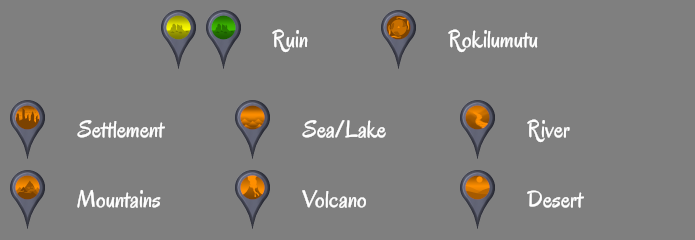Rilanga Union
The Rilanga Union was a federation of nations around what is now known as the Zugderi Sea.
Public Agenda
The Rilanga considered it their calling to spread the gift of civilization and to ultimately unite Ranul's population under the Union's guidance.
History
Founding
The Rilanga Union was founded on 474 NZR, Degmanoma 16, based on several existing trade agreements between the nations around the Zugderi Sea. Besides a shared currency those nations also agreed on a set of common laws, standards for the education of their citizens, and a number of norms for industrial production. People within the Union were allowed to travel, settle down and work anywhere in the member nations without restrictions, and trade across its interior borders was exempt from customs duty.Two Superpowers in Conflict
The lands around the Zugzaspo Sea had traditionally been settled by eccentric dreamers, outcasts, criminals and other people who were seeking independece from their homelands. On Taprunoma 3 of the year 472 NZR, approximately two years after the Rilanga Union was formed, the Ran-E-Zu Confederation emerged. Over the course of the following years, the loose alliance of sovereign nations severed all ties with the nations in the west, forcing diplomats to leave, confiscating assets of Rilanga companies and raising export tariffs for metals and certain plants. In the beginning, armed conflicts were rare due to the natural separation by the Ralenlos Mountains and the Tambeselo Desert. However, as the centuries went by and the animosities grew, the two factions began developing their military forces and several wars broke out over resources and territories. Both sides grew in influence, either by forming alliances, accepting new member nations or outright subjugating adjacent peoples. Eventually, each of them controlled approximately one half of Ranul's surface.The Final War
The hostility between the Rilanga Union and the Ran-E-Zu Confederation reached its peak in what the Rilsu later named "Zem Runeki", literally "The Final War." It escalated when both sides developed weapons of mass destruction and gradually lost their inhibitions against using them on civilian settlements and infrastructure. Many members of the political, scientific and cultural elite were able to survive by retreating to shelters in the Ralenlos Mountains. The vast majority of the population, however, was killed when the Ran-E-Zu launched a massive last wave of attacks on the densely populated coastal regions.Disbandment
The Peace Conference took place about one and a half years after the two superpowers had nearly rendered their species extinct. The remaining leaders of the Rilanga Union agreed to unite all survivors under a new government and form a single culture. As of Sedunoma 25 in the year 1 VZR, both factions were dissolved and replaced by the Rilsu World Republic.
Territories
The founding nations were situated on the inner coast of the Zugderi Sea. From there, the Rilanga Union gradually gained control over the adjacent lands, growing towards the Zugakru Sea in the west and around the Zugnur Sea in the south.
Education
All children had access to a standardized school system in which education was provided free of charge. Adults were highly encouraged to obtain academic degrees and qualify for more intellectually demanding professions.
DISBANDED/DISSOLVED

474 NZR, Degmanoma 16 - 1 VZR, Sedunoma 25
Type
Political, Federation
Alternative Names
Tamak mi Rilanga
Successor Organization
Power Structure
Federation
Currency
Subsidiary Organizations
Official Languages
Controlled Territories
Related Ethnicities




Comments
Author's Notes
Another major article that I can finally scratch off my ToDo list. I'm not sure whether any of the founding nations will get articles later, I think that will depend on what I need them for. Is there anything else that you would like to know about them?